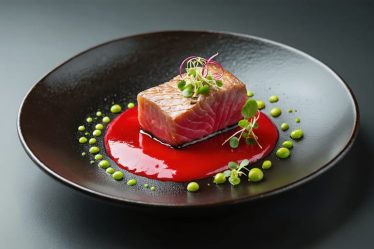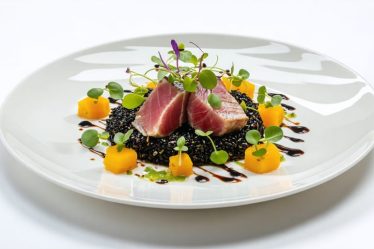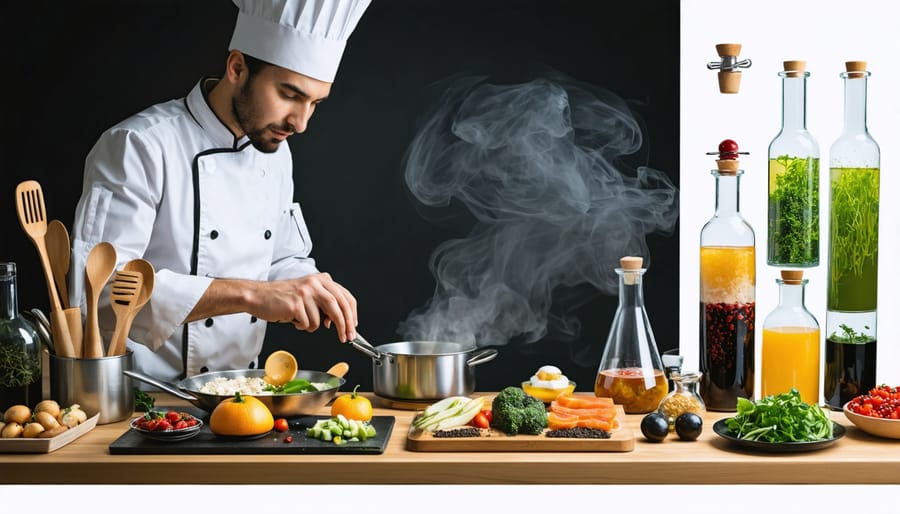
Transform ordinary ingredients into extraordinary dishes by mastering modern mindful kitchen techniques that professional chefs use every day. Experimentation in the kitchen isn’t just for acclaimed restaurants anymore – it’s becoming an essential part of home cooking culture, where creativity meets science to elevate everyday meals.
Today’s innovative home cooks are breaking traditional culinary boundaries, incorporating molecular gastronomy techniques like foams and spherification, while also embracing ancient methods like fermentation and aging with modern twists. This fusion of old and new has sparked a revolution in home kitchens, where simple ingredients are transformed through innovative techniques that anyone can master.
The beauty of culinary innovation lies in its accessibility – you don’t need expensive equipment or years of professional training to create memorable dining experiences. With basic tools, curiosity, and willingness to experiment, you can unlock new flavors, textures, and presentations that will transform your everyday cooking into something extraordinary. Whether you’re interested in modernist cuisine or simply want to elevate your weekly meal prep, the world of culinary innovation offers endless possibilities for creative expression in your kitchen.
Modern Cooking Methods That Will Change Your Kitchen Game
Sous Vide: Perfect Results Every Time
Have you ever dreamed of achieving restaurant-quality results in your home kitchen? Let me introduce you to one of my favorite game-changing kitchen tricks: sous vide cooking. This gentle cooking method, which means “under vacuum” in French, is revolutionizing how we prepare meals at home.
Think of sous vide as a warm bath for your food – you simply seal ingredients in a plastic bag and cook them in temperature-controlled water. The magic lies in its precision; your food cooks at exactly the right temperature, making it nearly impossible to overcook that precious salmon fillet or expensive steak.
I remember my first sous vide experiment with a chicken breast – it was the juiciest I’d ever tasted! The technique maintains moisture while infusing flavors deeply into your food. Whether you’re cooking vegetables, meat, or even eggs, sous vide delivers consistent, restaurant-worthy results every single time.
The best part? It’s surprisingly hands-off. Once you’ve set your temperature and timer, you’re free to focus on other tasks. No more hovering over the stove or constantly checking for doneness. Plus, many affordable sous vide devices are now available for home cooks, making this professional technique accessible to everyone who loves cooking.
For busy moms and career women who want to elevate their cooking game without adding stress, sous vide is a game-changer that brings confidence and consistency to the kitchen.

Molecular Gastronomy Made Simple
The term “molecular gastronomy” might sound intimidating, but I promise you don’t need a science degree to bring some of these exciting techniques into your kitchen! When I first experimented with these methods, I was amazed at how simple yet impressive the results could be.
Let’s start with spherification – those gorgeous liquid-filled bubbles you’ve seen in fancy restaurants. All you need is calcium lactate and sodium alginate (both easily available online), and you can transform your favorite juices into burst-in-your-mouth pearls. My kids love helping me make “fruit caviar” for weekend brunches!
Another approachable technique is using agar-agar, a vegetable-based gelatin. Try creating elegant cubes of wine jelly or layered fruit jellies that hold their shape at room temperature. One of my favorite party tricks is making coffee “caviar” to top vanilla ice cream – it always gets oohs and ahhs from guests!
Food foams are another easy win. Using a simple hand blender and a touch of soy lecithin (found in most health food stores), you can create light, airy foams from almost any flavorful liquid. I recently made a champagne foam to top strawberry desserts, and it was an absolute showstopper.
Remember, molecular gastronomy isn’t about complicated science – it’s about having fun and bringing playfulness to your cooking. Start with these simple techniques, and you’ll be amazed at how quickly you can create restaurant-worthy dishes at home.
Flavor-Boosting Secrets from Top Chefs
The Art of Flavor Layering
Remember when you first tasted a perfectly seasoned dish and wondered how the chef created such incredible depth of flavor? That’s the magic of flavor layering, and I’m excited to share this game-changing technique with you.
Think of flavor layering like painting a masterpiece – each ingredient adds a new dimension to your culinary canvas. Start with your base flavors, like sautéed onions, garlic, and celery (the famous mirepoix), which create a foundation for your dish. Then, build up with complementary ingredients that enhance each other.
One of my favorite ways to layer flavors is starting with aromatics, then adding umami-rich ingredients like mushrooms or tomato paste, followed by herbs and spices at different stages of cooking. For example, when making a rich pasta sauce, I’ll add dried herbs early in the cooking process, but save fresh herbs for the end to preserve their bright flavors.
The key is understanding timing – some ingredients need time to develop (like caramelized onions), while others shine brightest with minimal cooking (like fresh citrus zest). Temperature plays a crucial role too; gentle heat helps marry flavors together, while high heat can create delicious caramelization that adds another layer of complexity.
Don’t be afraid to experiment with contrast: a touch of acid can brighten rich dishes, while a pinch of salt can actually enhance sweetness. I love adding a splash of vinegar to finished soups or a sprinkle of flaky sea salt on chocolate desserts – these small touches can transform good dishes into memorable ones.
Start simple and build your confidence. Soon you’ll be creating dishes with the kind of depth that makes people ask for your secrets!
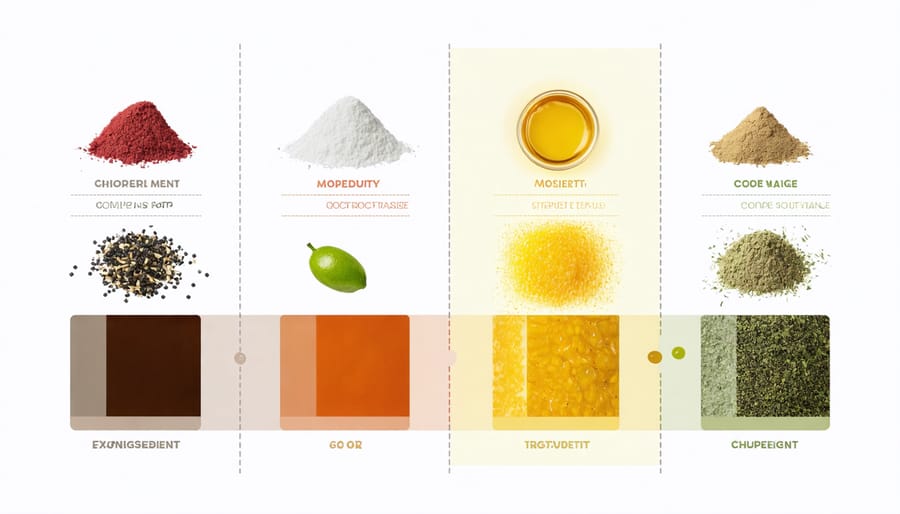
Temperature and Texture Play
Remember that magical moment when you first tried warm apple pie with cold vanilla ice cream? That delightful contrast of temperatures is exactly what modern culinary innovation is all about! As a home cook who loves experimenting, I’ve discovered that playing with temperature and texture can transform an ordinary dish into an unforgettable dining experience.
Start by thinking about temperature contrasts in your everyday cooking. Try serving a chilled cucumber soup with warm, crispy croutons, or top a hot chocolate lava cake with frozen berry compote. These combinations create exciting moments of discovery for your taste buds and guests alike.
Texture is equally important in creating memorable dishes. Think about combining smooth with crunchy, creamy with crispy, or tender with chewy. One of my favorite ways to play with texture is adding toasted nuts to creamy pasta dishes or sprinkling crispy fried shallots over velvety soups.
Here’s a simple technique to get you started: Next time you’re making a salad, include at least three different textures. For example, combine tender lettuce leaves with creamy avocado and crunchy toasted seeds. Then, dress it with both room-temperature vinaigrette and chilled cucumber chunks for an interesting temperature contrast.
Don’t be afraid to experiment! Try freezing fresh herbs before adding them to hot dishes, or contrast smooth purées with crystallized ginger or toasted breadcrumbs. The key is to think about how different temperatures and textures can complement each other while creating exciting moments of surprise on the plate.
Remember, even simple dishes can become extraordinary when you thoughtfully consider these elements. Your cooking journey is about exploration and finding what delights your palate the most.
Plating Like a Pro
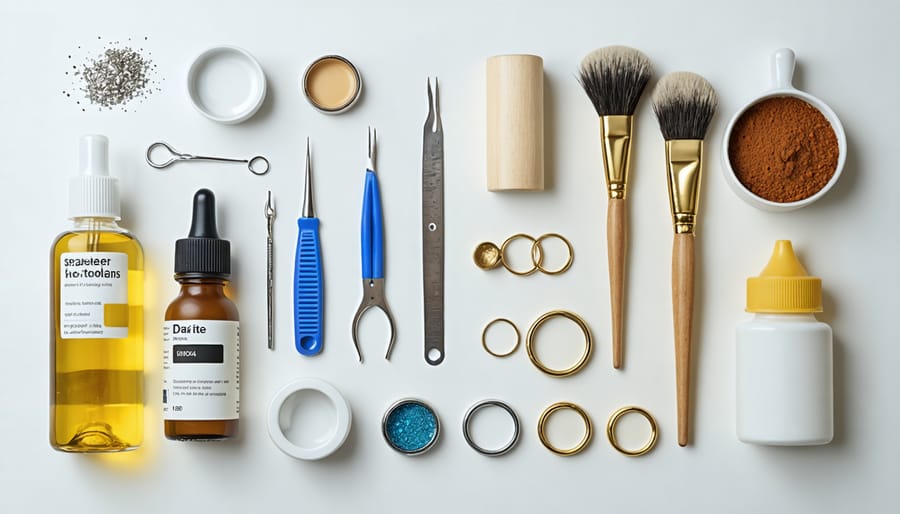
Essential Plating Tools
Creating restaurant-worthy plates isn’t just about the food – it’s about having the right tools to bring your vision to life. As someone who’s transformed countless home-cooked meals into Instagram-worthy presentations, I can tell you that investing in the right essential kitchen tools makes all the difference.
Start with a set of precision tweezers – they’re perfect for delicately placing microgreens or making those tiny adjustments that elevate a dish from homemade to haute cuisine. Small squeeze bottles are another game-changer, allowing you to create elegant sauce designs and perfect dots that make your plates pop.
Ring molds in various sizes are must-haves for creating those perfectly shaped rice towers or tartares you see in upscale restaurants. Keep a collection of small spoons handy too – they’re essential for creating quenelles and precise sauce placement.
Don’t forget about your offset spatula – it’s incredible for smooth sauce swooshes and precise plate transfers. A small kitchen torch adds drama and finishing touches to dishes, while paintbrushes (dedicated to cooking, of course!) help create artistic sauce strokes.
My personal favorite is the plating wedge – it’s amazing how this simple tool helps create height and structure on the plate. Remember, these tools don’t need to be expensive; many can be found at your local kitchen store or online retailers.
Basic Plating Principles
Think of your plate as a blank canvas waiting to be transformed into a masterpiece. I remember when I first learned about plating techniques – it completely changed how I approached serving meals, even for casual family dinners! The key to mastering these fine dining essentials starts with understanding a few basic principles.
First, embrace the power of the clock method. Imagine your plate as a clock face, placing your protein at 6 o’clock, starches at 2 o’clock, and vegetables at 10 o’clock. This creates natural balance and makes portions look intentional rather than scattered.
Color contrast is your best friend when it comes to creating visual interest. I love pairing vibrant green vegetables with golden-brown proteins, or adding a pop of red with cherry tomatoes or bell peppers. Remember, we eat with our eyes first!
Height adds dimension and drama to your presentations. Try layering components instead of spreading everything flat. Start with a sauce or purée as your foundation, stack your main elements, and finish with delicate garnishes or microgreens on top.
Negative space is just as important as the food itself. Leave some areas of the plate empty – this creates breathing room and makes your dish look more sophisticated. Think of it as giving your food elements space to shine!
Finally, always keep your portions manageable and maintain clean edges on your plate. A quick wipe with a clean cloth before serving makes all the difference in achieving that professional look.
Bringing It All Together
Now that we’ve explored various innovative techniques, let’s see how real home cooks are putting them into practice. Take Sarah, a busy mom from Portland, who transformed her weeknight dinner routine by incorporating sous vide cooking. She prep-seasons her proteins in the morning, starts the water bath when she leaves work (using a smart plug), and comes home to perfectly cooked meals that only need a quick sear to finish.
The key to successful culinary innovation isn’t about mastering every technique at once. Start by incorporating mindful cooking habits and choosing one new method to practice each month. For instance, you might begin with fermentation by making your own kombucha or kimchi. Once comfortable, move on to experimenting with molecular gastronomy techniques like creating citrus caviar or herb-infused foams.
Here are some practical ways to start your culinary innovation journey:
1. Create a designated “experiment day” – perhaps Sunday afternoon – when you can try new techniques without time pressure
2. Join online cooking communities to share experiences and learn from others
3. Start a cooking journal to document your successes, failures, and modifications
4. Invest gradually in essential equipment, beginning with versatile tools like an immersion circulator or food dehydrator
5. Partner with a cooking buddy to split costs of ingredients and share the learning experience
Remember that even professional chefs started somewhere. Emily, a former student of mine, began by simply playing with different plating techniques using items from her pantry. Today, she runs a successful catering business known for its innovative presentation style.
The beauty of culinary innovation lies in its flexibility. You can adapt these techniques to fit your lifestyle, dietary preferences, and available time. Start small, be patient with yourself, and most importantly, have fun with the process. After all, some of the most delightful culinary discoveries happen when we’re willing to think outside the recipe box and embrace our creative spirit in the kitchen.
As we wrap up our culinary journey together, remember that innovation in the kitchen isn’t just about following trends – it’s about finding your own creative voice and having fun along the way. I’ve seen firsthand how even small changes, like experimenting with a new spice combination or trying an unfamiliar cooking technique, can transform everyday meals into extraordinary experiences.
The beauty of culinary innovation lies in its accessibility. You don’t need expensive equipment or years of professional training to start pushing boundaries in your kitchen. Start small by challenging yourself to modify one familiar recipe each week, whether it’s incorporating an unexpected ingredient or testing a different cooking method.
I’ve found that some of my most successful kitchen experiments came from simply asking “what if?” What if I fermented these vegetables instead of pickling them? What if I tried smoking this ingredient rather than roasting it? These questions have led to delightful discoveries that have become family favorites.
Remember, not every experiment will be a masterpiece – and that’s perfectly okay! Each attempt teaches us something valuable about flavors, techniques, and our own preferences. The most important thing is to maintain that spirit of curiosity and willingness to try new things.
So go ahead, break some rules, trust your instincts, and don’t be afraid to make mistakes. Your kitchen is your laboratory, and every meal is an opportunity to innovate. Who knows? Your next kitchen experiment might just lead to your signature dish!

